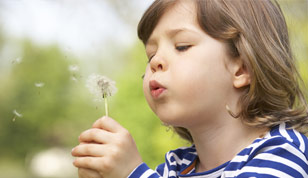Blog Categories
Search Blog
Blog Categories
Spring Walk, Let’s Talk
With spring just around the corner, outdoor walks and visits to the park will soon be a part of daily routine for families. These experiences can provide many opportunities for language growth including the introduction of new vocabulary and a framework for starting conversations with your child. As discussed in our last speech-language blog post, incorporating language practice into daily activities is a great way to work on communication skills in a fun, natural way.
During walks and playground visits, many different language concepts and vocabulary can be incorporated to describe the setting, items in the setting, the actions in which your child is engaging, and the activities of other children. Below are some suggestions to help with talking while you’re walking!
- Describing the weather is a great way to introduce new adjectives and engage in conversation with your child while walking. Vocabulary such as “sunny,” “cloudy,” “windy,” “bright,” and “hot” can be used to talk about the day’s weather conditions. You can also share your opinion about whether you like or dislike the weather and encourage your child to comment as well.
- While your child navigates the playground, you can model many different types of verbs to describe your child’s play. Vocabulary such as “swinging,” “jumping,” “sliding,” and “climbing” can be used to label actions and comment on these fun activities.
- The spring is a perfect time to point out various nouns in the environment that were absent during the winter months. Labeling birds, trees, flowers, and insects is a great way to expand your child’s spring and summer vocabulary.
- The playground offers many opportunities to introduce your child to prepositions and location concepts in a natural way. Identifying when your child is under the tree, beside the swing, or between the slide and the ladder, can help your child understand spatial terms. You can also incorporate these terms into hide-and-go-seek games at the playground to describe the location of the person hiding.
- Pronouns can be used to label and describe the other children at the playground. Modeling pronouns such as “he,” “she,” and “they” can help your child understand and use these pronouns to formulate longer phrases and sentences about the activities of other children around them.
- After returning from your playground visit, have your child draw a picture of the event and describe what they did. This is a great way to work on past-tense vocabulary (e.g., “I went to the playground,” “I climbed the ladder,” etc.), practice the new vocabulary you introduced, and help them with telling personal narratives.
With these language tips and tricks, you can make a spring outing an enjoyable educational experience for your child. After a long, cold winter, we hope you enjoy the fresh air!






